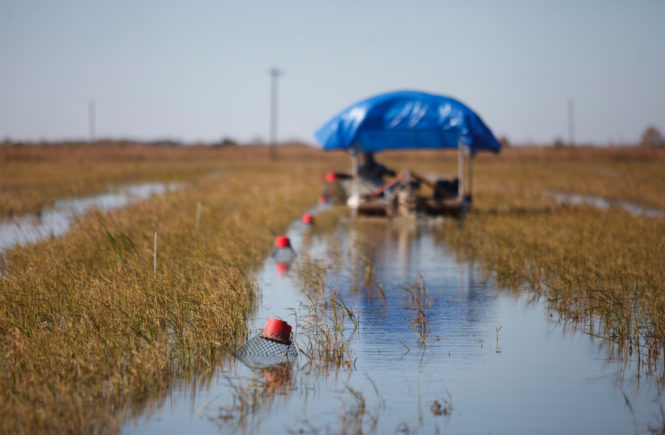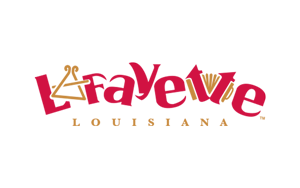It’s that time of year again: Crawfish Season! In South Louisiana, that is definitely cause for celebration, especially during Mardi Gras and the ensuing Season of Lent when meat is off the menu for so many.
While we love to consume crawfish, most of us are not aware of the history of crawfish farming or how the production process has become more commercialized in the past few decades. On a recent Discover Lafayette podcast episode with Mark Alleman of Hook & Boil Restaurant, Mark explained that his restaurant serves up freshly harvested crawfish from the Alleman Family Farm, operated by his dad, Don Alleman. His father rotates his rice crop with the crawfish harvest, which is a practice typically utilized by over 50% of small crawfish aquaculture farms to produce the most productive yield.
Louisiana produces about 90% of the crawfish consumed in the U. S. and is harvested from over 120,000 acres of land in the state. The terrain of Southwest Louisiana provides ideal growing conditions as the production requires flat lands that can be easily flooded. Most producers manage less than 150 acres, and combine crawfish farming with rice production.
Crawfish was caught in the wild in places such as the Atchalafaya Basin until the 1950’s when farmers began flooding their rice fields to produce crawfish for family consumption. By the mid-1960’s, a market for peeled crawfish took off and new markets opened up for both wild-caught and farm raised crawfish. In 1964, LSU’s School of Forestry began researching the most effective methods for pond production where it was determined that crawfish is best produced in permanent rotation with a rice crop in the same location, or occasionally rotating in another crop such as soybeans.
As rice production is much more competitive and driven by large farming operations, many small producers have turned to crawfish production to maintain their farm’s profitability. Depending on the weather and other variables, crawfish season can start as early as November and go through June, although typically the season peaks in April.
Louisiana’s farmers contribute greatly to the Cajun and Creole cuisine which we all enjoy and sometimes take for granted. Next time you enjoy a serving of locally sourced crawfish, such as dinner out at Hook & Boil, remember our local farmers who make this all possible!
Information on the crawfish industry was obtained from the Louisiana Crawfish Production Manual produced by LSU.


